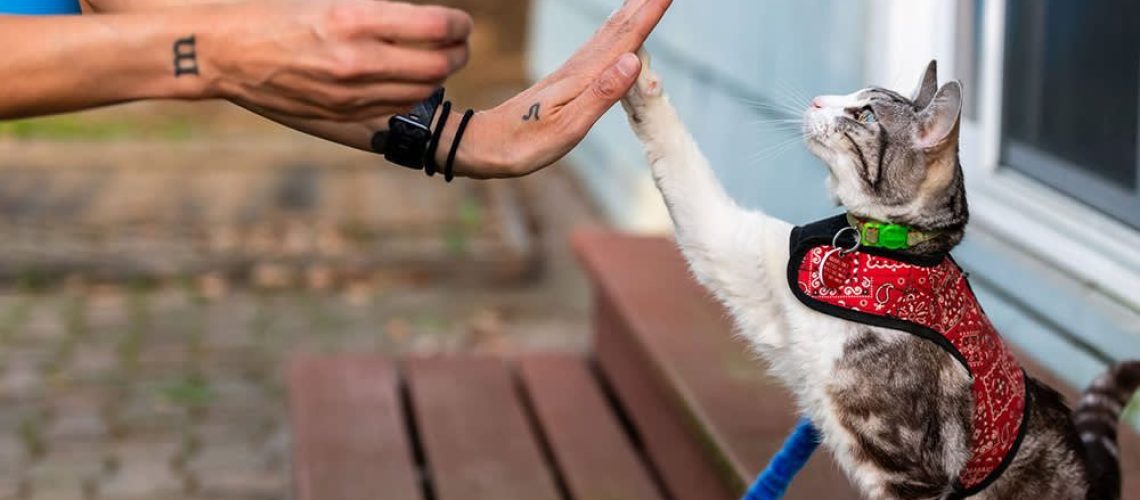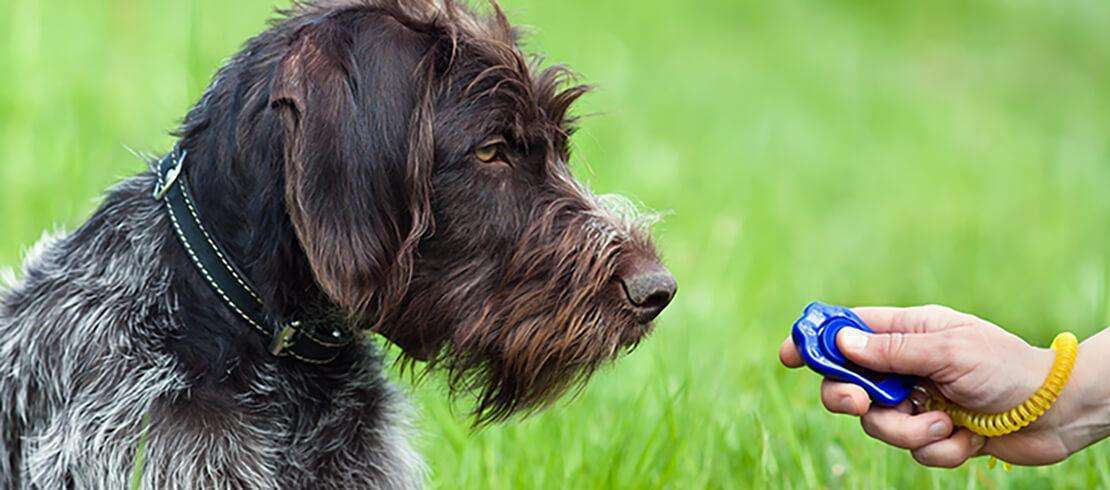Are you tired of your cat scratching up furniture or ignoring your commands? Well, we have a solution that will not only improve your relationship with your feline friend but also provide them with mental stimulation and entertainment. Welcome to the world of clicker training for cats! This fun and rewarding training method has been proven to effectively teach cats new behaviors and tricks. In fact, studies show that 80% of cats who undergo clicker training exhibit improved obedience and responsiveness. By understanding the principles behind clicker training, you can unlock a whole new level of communication with your furry companion. So, grab your clicker and get ready to embark on an exciting journey of bonding and learning with your cat!
Key Takeaways:
- Clicker training can be a fun and effective way to train cats.
- The clicker serves as a signal to the cat that they have performed the desired behavior correctly.
- Treats should be used as a positive reinforcement during clicker training sessions.
- Consistency and repetition are key in clicker training for cats.
- Clicker training can help improve the bond between cats and their owners by providing mental stimulation and positive interaction.
What is Click and Treat: Fun Clicker Training for Cats?
Click and Treat is a type of training method that uses a small handheld device called a clicker to teach cats new behaviors. The clicker makes a distinct clicking sound when pressed, which signals to the cat that they have done something correctly. This sound is then followed by a treat or reward, reinforcing the desired behavior.
Clicker training works on the principle of positive reinforcement, where cats learn to associate the sound of the clicker with receiving a reward. This helps them understand what behavior is being rewarded and encourages them to repeat it in order to receive more treats.
Why Use Clicker Training for Cats?
Clicker training is a fun and effective way to train cats because it allows them to actively participate in their own learning process. Unlike traditional training methods that rely on punishment or force, clicker training focuses on rewarding desired behaviors, making it a positive experience for both the cat and the owner.
This method also allows for clear communication between the cat and the trainer. The clicker provides an immediate signal that lets the cat know exactly what behavior they are being rewarded for, which can help speed up the learning process.
The Benefits of Clicker Training:
- It strengthens the bond between cats and their owners.
- It stimulates their minds and provides mental enrichment.
- It can be used to teach basic commands as well as fun tricks.
- It encourages cats to engage in positive behaviors instead of undesirable ones.
The Process of Click and Treat Training in Simple Steps
The first step in clicker training is to introduce your cat to the clicker itself. This can be done by clicking the device and immediately offering a treat. Repeat this several times so that your cat associates the sound of the clicker with receiving a reward.
Once your cat understands the concept of the clicker, you can start using it to shape their behavior. For example, if you want to teach your cat to sit on command, you would wait for them to naturally lower their body into a sitting position and then immediately click and reward them. Gradually, you can add a verbal cue, such as saying "sit" before they perform the behavior.
Consistency is key in clicker training. It's important to always follow up the click with a treat or reward, as this reinforces the positive association between the sound and the reward. With practice and repetition, your cat will begin to understand what behaviors are being rewarded and will start offering those behaviors more frequently.
How Does Clicker Training Work?
Clicker training is a positive reinforcement method used to train cats. It involves using a small handheld device called a clicker, which makes a distinct clicking sound when pressed. The clicker serves as a signal to the cat that they have performed the desired behavior correctly. This technique works because cats quickly learn to associate the sound of the clicker with receiving a reward, such as a tasty treat or praise.
When starting clicker training, it's important to first introduce the cat to the clicker and establish its meaning. This can be done by clicking the device and immediately giving the cat a treat. Repeat this process several times until the cat understands that the click sound signifies something positive is about to happen.
Once the cat has made this association, you can begin using the clicker to shape their behavior. For example, if you want your cat to sit on command, you would wait for them to naturally sit and then immediately press the clicker and give them a treat. With repetition, your cat will start associating sitting with receiving rewards and will begin sitting on command when they hear the click.
Why is Clicker Training a Fun Way to Train Cats?
Clicker training is not only effective but also fun for both cats and their owners. Unlike traditional training methods that rely on punishment or force, clicker training focuses on positive reinforcement. This means that instead of scolding or physically manipulating your cat into performing certain behaviors, you are rewarding them for doing what you want.
Cats are intelligent animals that enjoy problem-solving and earning rewards. Clicker training taps into these natural instincts by allowing cats to actively participate in their own learning process. They quickly learn that they have control over earning rewards through their actions, which makes training sessions engaging and enjoyable for them.
Additionally, clicker training strengthens the bond between cats and their owners. It creates a positive and trusting relationship based on communication and cooperation rather than fear or dominance. By using clicker training, you can establish clear communication with your cat and build a strong foundation of trust, making training sessions a fun and rewarding experience for both of you.
The Process of Click and Treat Training in Simple Steps
Click and treat training involves a simple process that can be broken down into several steps:
1. Introduce the clicker: Start by introducing your cat to the clicker. Click the device and immediately give them a treat. Repeat this several times until they understand that the click sound means something positive is coming.
2. Choose a behavior: Decide on the behavior you want to train your cat. It could be sitting, shaking paws, or any other command.
3. Capture the behavior: Wait for your cat to naturally perform the desired behavior. For example, if you want them to sit, wait until they sit on their own.
4. Click and treat: As soon as your cat performs the desired behavior, press the clicker and give them a treat immediately afterward. This reinforces the association between the behavior and receiving rewards.
5. Repeat and reinforce: Practice the same behavior multiple times, clicking and treating each time your cat performs it correctly. Gradually increase expectations by adding cues or raising criteria for reward.
6. Generalize the behavior: Once your cat consistently performs the desired behavior in one location or situation, start practicing in different environments to ensure they understand the command regardless of context.
Remember to keep training sessions short (around 5-10 minutes) and end on a positive note with lots of praise and treats. With patience and consistency, your cat will learn new behaviors through clicker training.
Basic Commands and Tricks You Can Teach Your Cat with Clicker Training
Clicker training opens up endless possibilities for teaching cats various commands and tricks. Here are some basic commands and tricks you can start with:
Sit
Teaching your cat to sit is a fundamental command that can be easily trained using clicker training. Wait for your cat to naturally sit, click the clicker, and give them a treat. Repeat this process until they associate sitting with the click sound.
Paw Shake
To teach your cat to shake paws, hold out your hand and wait for them to touch it with their paw. Click the clicker as soon as they make contact and reward them with a treat. Gradually shape the behavior by only clicking when they lift their paw higher or shake it.
High Five
Similar to paw shake, teaching your cat to give a high five involves holding out your hand but slightly higher. When they touch your hand with their paw, click and reward them. With practice, you can add a verbal cue like "high five" before presenting your hand.
Jump Through Hoop
For more advanced tricks, you can teach your cat to jump through a hoop. Start by holding the hoop close to the ground and gradually raise it as they become comfortable. Click and reward each time they successfully jump through the hoop.
Remember to break down each trick into small steps and be patient with your cat's progress. With consistent training sessions, they will amaze you with their abilities!
Recommended Rewards and Treats for Click and Treat Training with Cats
When it comes to rewards in clicker training, it's important to choose treats that are highly motivating for cats. Here are some recommended options:
- Small pieces of cooked chicken or turkey: Cats often find these protein-rich meats irresistible.
- Freeze-dried meat treats: These treats have an intense flavor that cats love.
- Commercially available cat treats: Look for treats that are specifically designed for training and have a strong aroma.
It's essential to use small, bite-sized treats to prevent overfeeding during training sessions. Additionally, make sure to adjust your cat's regular meal portions accordingly to maintain a balanced diet.
Apart from food rewards, some cats may also respond well to praise or play as rewards. Experiment with different types of rewards to find what motivates your cat the most. Remember, the key is to make the reward highly desirable and something your cat looks forward to earning.
How Long Does It Take to See Results with Click and Treat Training for Cats?
The time it takes to see results with clicker training can vary depending on several factors, including your cat's personality, previous training experience, and the complexity of the behavior you're trying to teach.
Some cats may catch on quickly and start responding to clicker training within a few sessions, while others may take longer. It's important to be patient and consistent in your training efforts.
For simple commands like sit or paw shake, you may start seeing progress within a week or two of regular training sessions. More complex tricks or behaviors might require several weeks or even months of consistent practice before your cat fully masters them.
Remember that every cat learns at their own pace, so it's crucial not to rush or force them into learning. Keep training sessions short and enjoyable, always ending on a positive note. With dedication and persistence, you will witness the remarkable results of clicker training in your cat's behavior.
In conclusion, clicker training is a fun and effective way to teach cats new tricks and behaviors. By using positive reinforcement with treats and the sound of a clicker, cats can learn to associate good behavior with rewards. So, give it a try and enjoy bonding with your furry friend through this interactive training method!
Is clicker training good for cats?
Considering this, it is evident that clicker training your cat can strengthen your connection and serve as an enriching activity for both of you. Additionally, it provides mental stimulation for your cat and allows you to utilize your clicker training skills effectively.
At what age should I start clicker training my cat?
It is possible to begin training a kitten at any age. If you have a new kitten, it is important to prioritize socialization skills initially, such as handling and being around other people. These skills will help them become well-adjusted cats and prepare them for clicker training.
How long does it take to clicker train a cat?
Frequently Asked Questions about Clicker Training Cats: While some cats may learn a new command within a few days, others may take longer, possibly weeks. It is important to let the cat dictate the pace of training and to keep sessions short. It is more effective to have 20 two-minute training sessions per week rather than just two 20-minute sessions.
What can I teach my cat with clicker training?
Using a clicker, you can train your cat to perform various behaviors such as sitting, staying, and touching a target. Other entertaining tricks include fetching, waving, and jumping through a hoop or into their cat carrier, which could be beneficial.
What are the disadvantages of clicker training?
Drawbacks: Engaging dogs with low motivation for food or toys can be challenging. If not executed correctly, learned positive behaviors may not consistently be displayed. Mastering more advanced tricks necessitates a significant amount of knowledge, practice, coordination, and precise timing.
At what age is it too late to train a cat?
However, it is still possible to teach an adult cat new tricks or address problematic behaviors. Whether your cat is a young kitten or already weaned, this comprehensive guide will help you navigate cat training.

















